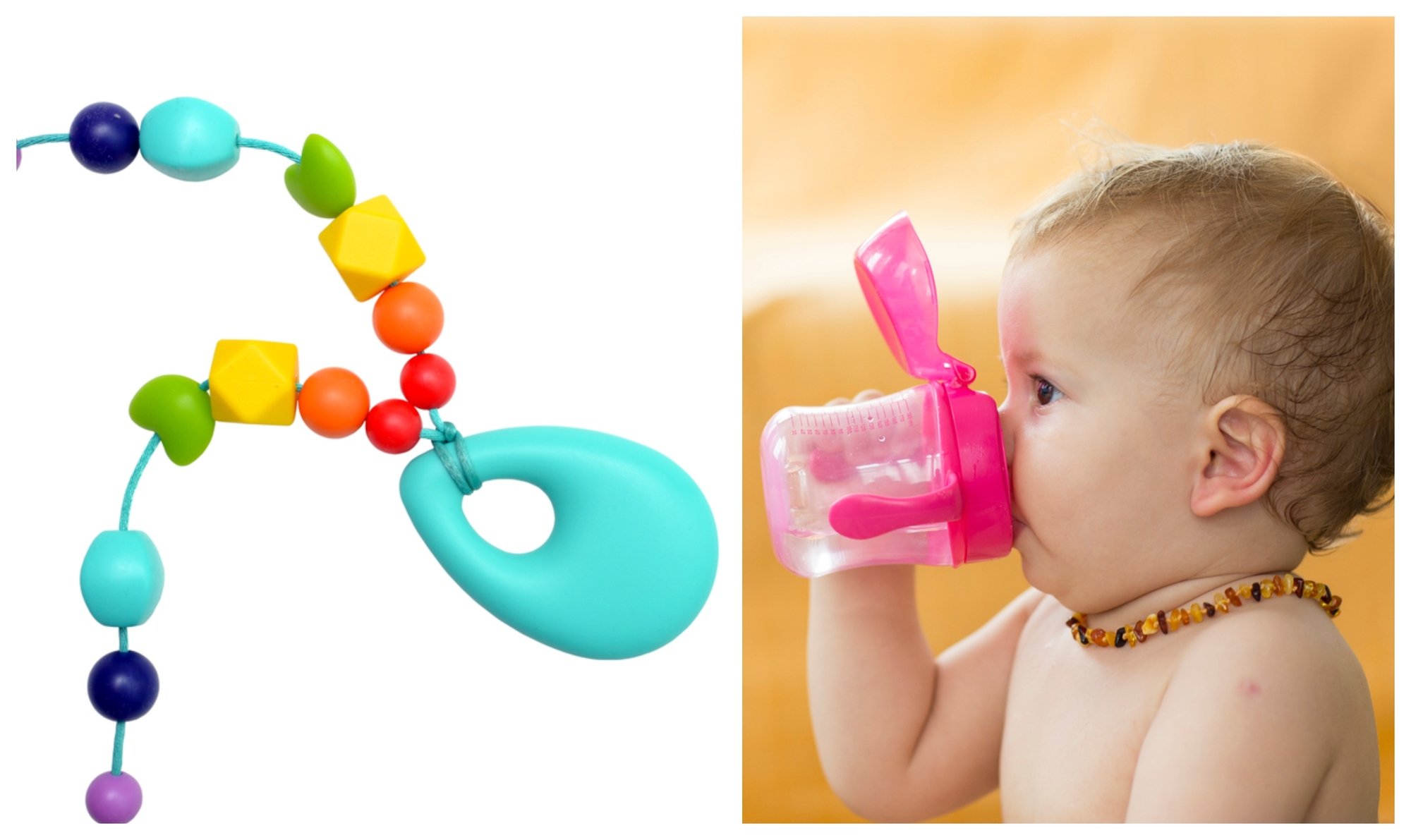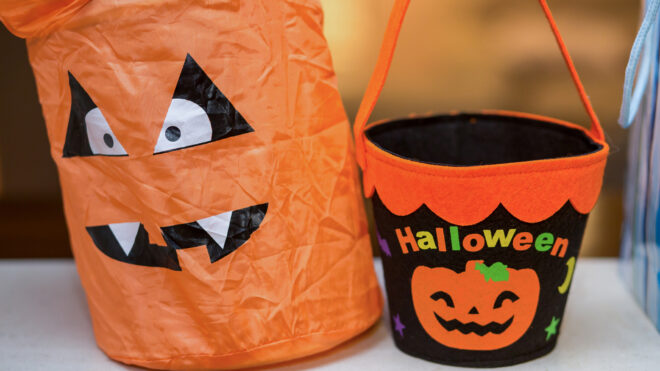
Teething necklaces and bracelets are more popular than ever and come in a million different styles and materials. But according to the Food and Drug Administration, the jewelry all has one scary thing in common: It's a serious choking and strangulation hazard.
The FDA issued a new report on Thursday advising parents and caregivers to avoid teething necklaces, bracelets, and all other jewelry.
The report cited accidents related to the jewelry, including an 18-month-old who was strangled by his amber teething necklace as he napped and a 7-month-old who choked on a wooden bead from a teething bracelet. The FDA said choking and strangulation are the biggest concerns, but the agency also warned against other potential risks, including injury to the mouth or infection if a piece of the jewelry irritates or pierces the child’s gums.
The report sparked a major debate on the FDA's Facebook page.

Some were relieved and said they can't believe parents ever allowed babies to use teething jewelry in the first place.

But others argued that their teething jewelry is perfectly safe and the FDA report is a conspiracy to sell more Tylenol.

For the record, it really only takes one bead to choke, so it doesn't matter if there are knots to keep them all from falling off at once. Some parents also noted that certain teething necklaces have a pressure release clasp so the necklace breaks and falls off if the baby is strangled. But the FDA report notes that children can also choke by inserting the necklace itself into their mouths — individual beads aren't the only risk.
The FDA report also does not advocate for giving kids Tylenol or other over-the-counter pain relievers. Instead, it instructs parents to gently rub or massage a teething baby's gums with a clean finger or to give them a teething ring made of firm rubber. One of my own kids' favorite remedies was gnawing on frozen fruit pieces in a mesh feeder.
The majority of pro-jewelry comments came from amber teething necklace users who said they'd never ditch the jewelry because it really works.

But despite a lot of anecdotal evidence, there's no real proof that these necklaces make a difference. Proponents of amber teething necklaces say they contain succinic acid, which is absorbed into the baby's skin when it gets warm and acts as a natural pain reliever.
But Dr. John Snyder, assistant professor of Pediatrics at Tufts University School of Medicine, wrote on his website, Science Based Medicine, that no studies have proven the efficacy of amber teething necklaces. He added that there is "no evidence that it [succinic acid] has analgesic effects at any dose" and "there is no evidence that succinic acid is released from amber on contact."
Plus, there are the logical questions of how much acid would actually be released by beads on a necklace, how much does a baby need to feel any effect, would the beads on the necklace ever be depleted, and would it be possible for a baby to overdose by wearing the necklace for long periods of time?
A lot of parents swear by teething jewelry and say it makes their babies drool less or sleep better.
But every baby handles teething differently, and there also a number of myths associated with teething that many parents still believe. As Dr. Emily Bruckner told Care.com, teething pain is not the horror parents imagine it to be. It's usually mild enough to be soothed by a cool washcloth, and it should not be seen as the sole cause of drooling or sleep disturbances.
Plus, correlation is not causation. Someone who swears their baby drooled less from one day to the next may be crediting a teething necklace for something that has other causes. Or, maybe they want so badly to make their baby feel better that they're succumbing to the placebo effect and seeing results that aren't really there. Are they pulling out a measuring cup and comparing the true daily amounts of drool their baby produces? Probably not.
As parents, we would do anything to help our babies feel better and keep them safe.
And I suspect that is why we cling so tightly to natural remedies and old wives' tales. We want to believe we're helping and that we've found the secret cure. We're coming from a place of love. But when the FDA is telling us that something has the potential to do more harm than good — that potential dangers have been proven by the deaths and injuries of real-life children — and the science that says this jewelry works has not been proven at all, it's probably worth it to listen to the experts on this one.




